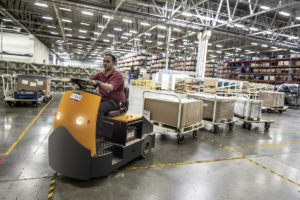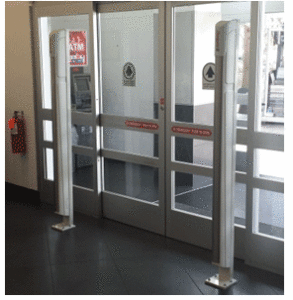 Because like alcohol abuse, both legal and illegal drug use, affects your bottom line. This issue never has a happy ending and it will never go away unless you meet it head-on.
Because like alcohol abuse, both legal and illegal drug use, affects your bottom line. This issue never has a happy ending and it will never go away unless you meet it head-on.
Drug abuse affects your bottom line through poor performance, high numbers of no call/no shows, risk to customer and employee safety, high workers comp claims, bad elements frequenting your business, customers shying away from your business and much, much more.
If you operate in a State that has essentially de-criminalized marijuana use, you have an even bigger exposure. Employees that feel empowered to get high on a frequent basis and come to work in that condition, are a threat to your livelihood. State law does not relieve you of liability. Marijuana use and possession are still illegal under Federal law. Even if the Federal law was to change, you would still be liable for your employee’s actions while they are at work. It is just the same as an employee that is under the influence of alcohol while at work.
But you probably suspected or knew this already. What you cannot do is look the other way. Your plan should start with hiring, as competently as you can. I teach pre-employment interviewing live, via webinar to LPSI customers free of charge. A candidate will likely tell you if they abuse drugs, you simply need to know how to ask the question. These techniques also apply to employee theft from their previous employers. You just need to know how to ask.
A solid Applicant Management Center (AMC) will allow you to keep track of the application and their information. We have an excellent AMC that is also so inexpensive that it is a no-brainer. No more paper applications to keep up with.
Next, you must conduct a background investigation (okay, we do that too). A search of the candidate’s criminal record, credit (if necessary), education and a drug screen will give you a much better idea of who you are hiring.
Drug testing is simple and inexpensive. Our customers approve the candidate for the drug test and our online system allows the candidate to locate and schedule the test at a lab near them. Our nationwide system then tracks the progress. Results are given to you automatically. We can advise you on what substances you should include in your testing. Tests that come back positive are automatically reviewed by an M.D.
So now that this is out of the way, we need to return to the reason why you should require drug testing. Imagine this: one of your employees in the process of doing their job, is under the influence of a substance, and they injure one of your customers, accidentally. In today’s climate that incident will be known far and wide. None of us want to be on the five o’clock news with the headline “Customer injured at insert your company’s name here by an employee that was high”.
Need more? People who use illegal drugs attract other people who use illegal drugs. The whole birds of a feather, flock together scenario. And in my 40+ years of Loss Prevention and Law Enforcement experience, I can tell you that the financial pressure that illegal drugs puts on a person will make them likely to steal to support their needs. Illegal drugs WILL lead to employee theft regardless of how well you think your employees like you and company.
Fix the issue before it becomes a financial drain and a liability to YOUR business and livelihood. Contact us today for more information.

 A Target or Walmart store can and are able to fight shoplifting in their stores every day of the year.
A Target or Walmart store can and are able to fight shoplifting in their stores every day of the year. I actually like and believe in all three of these things. When it comes to drugs they have to be the legal kind. All of us have seen the destruction that illegally used drugs cause. In a business environment, illegal drug use by an employee not only has an impact on their work performance but creates serious customer and legal issues for employers. An employee that is under the influence of any substance that influences their ability to do their job correctly or safely, will cause customers to question who they are doing business with.
I actually like and believe in all three of these things. When it comes to drugs they have to be the legal kind. All of us have seen the destruction that illegally used drugs cause. In a business environment, illegal drug use by an employee not only has an impact on their work performance but creates serious customer and legal issues for employers. An employee that is under the influence of any substance that influences their ability to do their job correctly or safely, will cause customers to question who they are doing business with. Hopefully, your store is one of those places where employees look forward to coming to work. You know what I’m talking about it’s that environment where everyone is happy to be there. Employees know they are there to get a job done and take pride in the service they offer to the customers. It’s the type of job where people may have an off day but their co-workers are supportive and help pick them up. It happens to all of us. These jobs have a manager who interacts with the employees and takes a real interest in each of them. The boss may take time to say hello and greet everyone. They know their employees by name and may even know their families. Unfortunately, not every workplace has such a camaraderie amongst the team members. There is any number of reasons this can happen but a major contributor to an unhappy workplace can be the hiring of an employee with a poor attitude.
Hopefully, your store is one of those places where employees look forward to coming to work. You know what I’m talking about it’s that environment where everyone is happy to be there. Employees know they are there to get a job done and take pride in the service they offer to the customers. It’s the type of job where people may have an off day but their co-workers are supportive and help pick them up. It happens to all of us. These jobs have a manager who interacts with the employees and takes a real interest in each of them. The boss may take time to say hello and greet everyone. They know their employees by name and may even know their families. Unfortunately, not every workplace has such a camaraderie amongst the team members. There is any number of reasons this can happen but a major contributor to an unhappy workplace can be the hiring of an employee with a poor attitude. C
C

 With darker daylight hours comes the need for more coffee, the use of lights earlier and a plan to keep crime away from your store or business. Have you considered that one of the following types of crime could affect you?
With darker daylight hours comes the need for more coffee, the use of lights earlier and a plan to keep crime away from your store or business. Have you considered that one of the following types of crime could affect you?
 Accidents can be costly to businesses. In fact, according to the
Accidents can be costly to businesses. In fact, according to the It’s that time of year when all store owners and managers start to make personnel decisions. Remember those people you hired in late August, maybe in September or even as late as October or November? Remember the conversations you may have had with them discussing how this was a “seasonal” position? You may have really dangled the carrot in front of them and told them that if they worked hard and showed initiative they might be retained on your staff after the holidays. Guess what? It’s time now for you to start taking a hard look at your staff and making some decisions and that isn’t always pleasant. Now you have to evaluate those employees and consider whether you want to keep them or you may have to decide if you can afford to keep them.
It’s that time of year when all store owners and managers start to make personnel decisions. Remember those people you hired in late August, maybe in September or even as late as October or November? Remember the conversations you may have had with them discussing how this was a “seasonal” position? You may have really dangled the carrot in front of them and told them that if they worked hard and showed initiative they might be retained on your staff after the holidays. Guess what? It’s time now for you to start taking a hard look at your staff and making some decisions and that isn’t always pleasant. Now you have to evaluate those employees and consider whether you want to keep them or you may have to decide if you can afford to keep them.